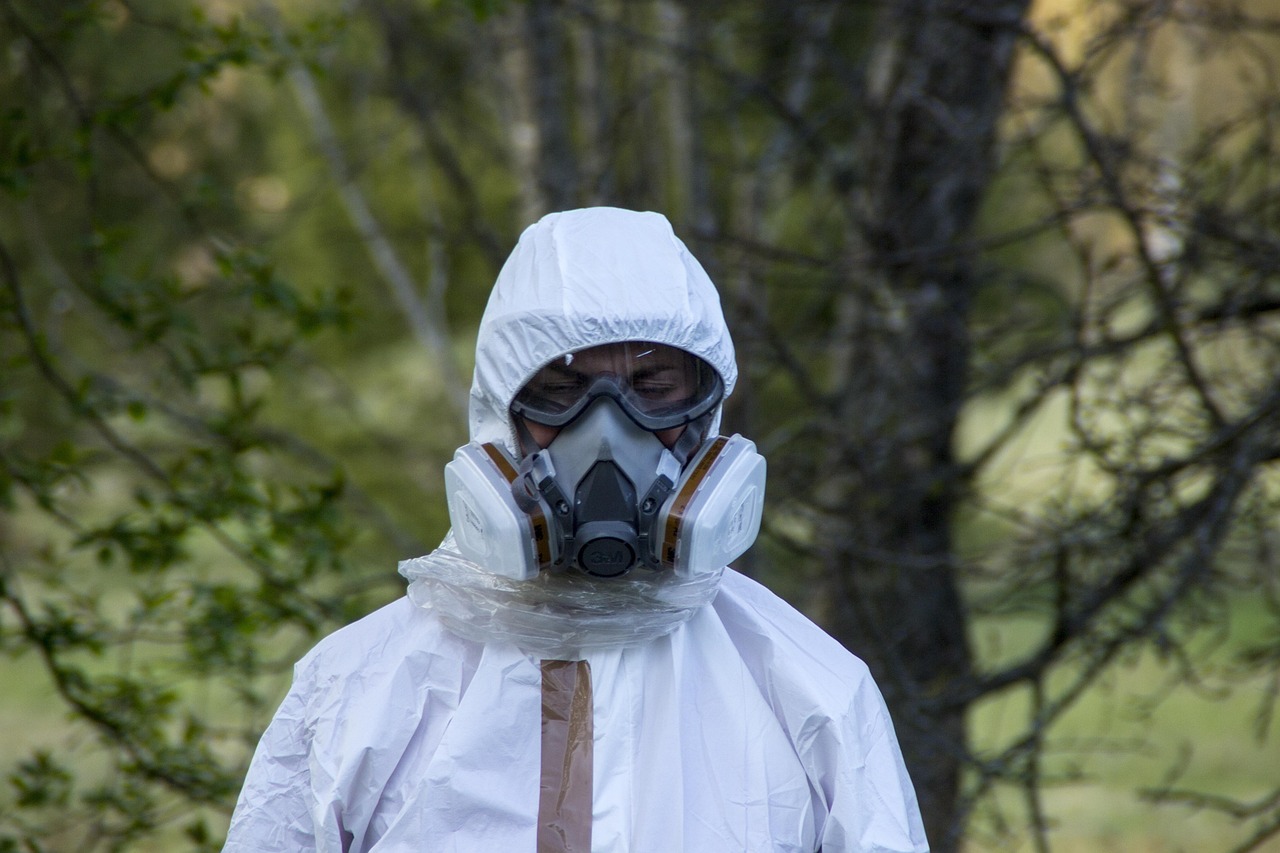Removing asbestos safely demands strict adherence to regulations and expert knowledge to protect health and property. Understanding legal requirements and recognising when to hire certified professionals can prevent costly mistakes and serious risks. This guide clarifies the process, helping you navigate asbestos removal efficiently and securely, whether considering a DIY approach or professional services. Trustworthy resources like ARCA offer essential support for safe handling.
Introduction to Asbestos Safety and Removal
Trusted Asbestos Specialists in South East London play a vital role in managing one of the most serious health hazards associated with older buildings. Asbestos, once widely used for insulation, roofing, and flooring, remains present in many structures across the UK. Exposure to asbestos fibers can cause severe diseases like mesothelioma and asbestosis, making safe removal and management crucial.
Have you seen this : Firefly nursery Catford: where play meets early education
Licensed asbestos specialists are essential because they are trained to follow strict safety protocols that reduce the risk of fibre release during removal. These regulations, established to protect both workers and residents, mandate detailed procedures, including asbestos hazard identification, proper disposal methods, and thorough site decontamination. Understanding these safety protocols ensures compliance with UK legislation and diminishes health risks from inadvertent exposure.
The role of regulatory compliance cannot be overstated. Asbestos removal regulations such as those from HSE (Health and Safety Executive) require that only certified professionals handle hazardous materials. They utilize specialized equipment like HEPA-filtered vacuums, sealed containment barriers, and protective gear to minimize fibre disruption and contamination. Following these guidelines ensures not only legal adherence but also the safety of everyone involved in or around the removal process.
Have you seen this : Your financial future: trusted advisor services in wisbech
In addition to adhering to established procedures, the importance of thorough asbestos testing and risk assessment remains a cornerstone in managing asbestos safely. Accredited inspections identify the presence, type, and location of asbestos materials, allowing for targeted removal strategies. This proactive approach reduces both environmental and health hazards, safeguarding building occupants and workers. Overall, engaging with reputable specialists ensures compliance, safety, and peace of mind during asbestos remediation efforts.
Understanding Asbestos and Its Risks
Identification and Common Locations
Correct asbestos hazard identification is the vital first step in protecting any property from asbestos fiber dangers. Asbestos was widely used in building materials prior to the late 1990s, making older structures especially vulnerable. Signs of asbestos presence can be subtle, often appearing in materials such as textured ceiling coatings, vinyl floor tiles, pipe insulation, and roof cement. Recognizing these potential asbestos contamination risks means checking common locations: behind wall panels, in attic insulation, or within boiler rooms. Homeowners and facility managers should always engage licensed asbestos specialists for accurate asbestos testing services using certified asbestos contractors, rather than relying on visual checks alone.
Health Risks and Exposure Effects
The health effects of asbestos exposure are severe and can be both immediate and long-term. When asbestos-containing materials deteriorate or are disturbed, microscopic asbestos fibers become airborne—posing substantial asbestos fiber dangers. Inhalation leads to direct contact with lung tissue, contributing to recognized asbestos-related diseases such as mesothelioma, asbestosis, and lung cancer. Both transient and continuous exposures increase health risks, and symptoms often remain invisible for years. Those living or working around untreated signs of asbestos presence face significant asbestos contamination risks, underscoring the critical importance of asbestos hazard identification by recognized experts.
Testing and Inspection Processes
Engaging in the asbestos inspection process requires specialized knowledge and a strict adherence to legal requirements for asbestos handling. Certified asbestos contractors conduct two main types of surveys: management surveys for daily property usage and refurbishment/demolition surveys before construction work. These surveys are performed by licensed asbestos specialists who gather samples for laboratory analysis using robust asbestos fiber detection techniques. Compliance with government asbestos guidelines ensures standardized procedures are met, whether for residential asbestos removal or industrial asbestos remediation.
All asbestos testing services should be followed by detailed reports that outline asbestos fiber dangers and necessary actions. Following a positive identification, professional teams implement regulated asbestos containment barriers and asbestos removal safety protocols. These steps—combined with precise asbestos hazard communication—protect building occupants and workers from severe asbestos contamination risks, making expert involvement indispensable for safe outcomes.
Legal Regulations and Safety Standards
UK Regulatory Framework
Asbestos removal regulations are strictly enforced in the UK to safeguard public health and the environment. The primary legislation includes the Control of Asbestos Regulations (CAR) 2012, which outlines clear legal requirements for asbestos handling by property owners and licensed asbestos specialists. Property owners must initiate asbestos hazard identification through comprehensive surveys, followed by the appointment of certified asbestos contractors for any removal tasks. The regulations require that all steps align with government asbestos guidelines and that only those with the necessary asbestos handling certification proceed with disturbance or disposal. Licensed contractors must demonstrate their compliance with legal requirements for asbestos handling, supported by valid licenses and up-to-date asbestos safety training.
All residential asbestos removal, as well as work in commercial or industrial premises, must be planned with a thorough asbestos risk assessment. Responsibilities mandated by law include maintaining up-to-date records of any regulated asbestos containing materials and ensuring ongoing monitoring for signs of asbestos presence. These records and reports enable proper risk communication to all stakeholders and help enforce regular re-inspection as part of comprehensive asbestos management.
Safety Protocols and Procedures
Effective asbestos removal safety protocols are foundational for minimising risks associated with asbestos fiber dangers and contamination. During the asbestos inspection process and removal stages, only licensed asbestos specialists equipped with robust protective gear for asbestos removal such as respirators with HEPA filters, disposable coveralls, and gloves are permitted on site. Strict containment methods use polyethylene sheeting, timber frames, and negative air pressure systems with HEPA filtration to prevent the spread of asbestos fiber contamination to other areas.
Continuous asbestos air monitoring and post-removal asbestos testing are required to track airborne particle levels and ensure compliance with legal exposure limits. Airtight decontamination zones, clearly marked with warning notifications, must be constructed before any asbestos abatement techniques are initiated. Site clearance only occurs once a formal inspection and air quality test demonstrate the successful removal and fibre containment, leading to the issuance of an official asbestos free certification. All asbestos cleanup procedures closely follow standards set out in government asbestos guidelines and industry best practices.
Permits, Documentation, and Compliance
A valid asbestos removal permit is compulsory before beginning any notifiable removal project. Contractors must notify the relevant authorities and submit official documentation (such as the ASB5 notification form) at least 14 days in advance. Strict record-keeping ensures every stage of asbestos removal project management is documented, from initial asbestos hazard identification to final waste disposal, helping clients demonstrate full asbestos abatement legal compliance if audited.
All asbestos waste transportation must be carried out in sealed containers, only by certified carriers, and detailed disposal records must be maintained for a legal minimum period of four years. Documentation should cover the quantities, locations, and disposal methods of regulated asbestos containing materials, meeting the reporting requirements laid out in the Control of Asbestos Regulations. Failure to comply with these requirements can result in prosecution, substantial fines, and severe occupational health risks. Only by following the recognised legal requirements for asbestos handling, adopting the latest asbestos abatement techniques, and engaging licensed asbestos specialists can property owners and contractors assure safety, compliance, and the protection of public health.
Step-by-Step Asbestos Removal Process
Pre-Removal Planning and Risk Assessment
Thorough asbestos hazard identification is vital before proceeding with any removal. A certified asbestos inspection process is conducted to pinpoint the presence and locations of hazardous materials. This involves detailed site surveys, sampling, and laboratory analysis by licensed asbestos specialists who are fully trained in legal requirements for asbestos handling. Signs of asbestos presence such as brittle insulation or discoloured ceiling tiles quickly trigger further investigation.
Comprehensive asbestos risk assessment shapes every aspect of project planning. Strict government asbestos guidelines require that a tailored asbestos removal project management plan is developed. This plan must address all asbestos contamination risks, establish safe asbestos disposal methods, and set up robust containment barriers. Proper asbestos removal site preparation includes installing warning signage, decontamination units, and physical barriers—standard measures under asbestos removal safety protocols.
Implementation of Removal Techniques
Only licensed asbestos specialists use approved asbestos abatement techniques, tailoring the approach to the location and type of asbestos. Wet removal, the most widely applied strategy, uses controlled spraying to suppress dust and minimize asbestos fiber dangers. For small or pipe-based materials, glove bag systems create isolated environments, further containing asbestos fiber spread.
Waste Handling and Disposal
Handling asbestos waste is subject to rigorous asbestos disposal regulations. All contaminated debris is double-bagged, sealed, and clearly labeled in line with asbestos hazard communication requirements. Waste is transported in leak-proof asbestos removal waste containers by licensed waste disposal facilities, ensuring safe transit.
Traceability is paramount; asbestos removal contractors complete transfer documentation for every batch, tracking it from collection to licensed hazardous waste sites. Safe asbestos disposal methods also involve keeping these records for several years, maintaining accountability across every phase of the asbestos removal process.
Post-Removal Procedures
After removal, asbestos cleanup procedures focus on full site decontamination. Every surface is cleaned using HEPA vacuums and wet wiping methods proven to control lingering asbestos fiber dangers. Only once a post-removal asbestos testing protocol confirms that asbestos fiber detection techniques show safe levels in the air does the process continue.
Final clearance inspections, in line with asbestos removal safety protocols and government asbestos guidelines, involve both visual checks and air sample analysis. Successful completion results in an asbestos free certification. This vital documentation assures property owners and regulatory bodies that the site meets all legal requirements for asbestos handling and is safe for reoccupation or further renovation.
Throughout, the asbestos removal process is tightly regulated, balancing public health, occupational safety, and environmental responsibility. When executed by certified asbestos contractors following best practices, these procedures greatly reduce long term asbestos health effects for building occupants and workers alike.
Choosing and Working with Professional Contractors
Selecting Qualified Professionals
Precision in asbestos hazard identification and remediation starts with hiring licensed asbestos specialists. When considering contractors, prioritize those with recognized certifications and a strong reputation validated through asbestos removal contractors reviews. Conduct a thorough asbestos inspection process, confirming that the team follows all government asbestos guidelines and holds the necessary asbestos handling certification.
Verifying credentials is vital. Ask to see proof of industry-recognised licenses, up-to-date insurance coverage, and satisfactory references. Professional asbestos testing services, combined with evidence of continuous asbestos safety training, distinguish certified asbestos contractors from general providers. Ensure the team has demonstrated experience in residential asbestos removal, commercial asbestos removal, or industrial asbestos remediation as relevant to your property type.
Cost Considerations and Estimates
Several factors influence asbestos removal cost factors, making it important to gather and compare asbestos removal project quotes. Property size, the type of asbestos detected during the asbestos inspection process, complexity of access, and the volume of material all affect prices. When reviewing average asbestos removal prices, scrutinize whether quotes account for necessary asbestos air monitoring, protective gear for asbestos removal, sealed asbestos removal waste containers, and compliance with asbestos disposal regulations.
Affordable asbestos services should never compromise safety. A trustworthy company will outline all line-item costs related to safe asbestos disposal methods, including transport by licensed waste disposal facilities and necessary post-removal asbestos testing. Always seek clarity about the warranties or insurances included as part of the agreement.
Service Support and Customer Guidance
Comprehensive service goes beyond removal. Licensed asbestos specialists should provide ongoing support, such as post-removal asbestos testing and the supply of an asbestos free certification. These follow-ups confirm successful asbestos fiber containment and help maintain ongoing health and safety.
Customer guidance is crucial throughout the asbestos removal project management process. Reliable contractors will explain the asbestos removal safety checklist in advance, detail all required asbestos removal safety protocols, and support homeowners in limiting asbestos contamination risks. Expect practical homeowner asbestos removal tips regarding site preparation, minimizing asbestos exposure, and coordinating safe access during work.
Solid support structures should extend into aftercare, offering documentation that confirms legal requirements for asbestos handling were met and explaining the schedule for future asbestos risk assessment checks. With a knowledgeable and responsive team, managing the health effects of asbestos exposure and adhering to all asbestos abatement legal compliance measures becomes much more manageable for property owners.
Emerging Technologies and Best Practices
New Abatement Technologies
Recent years have seen asbestos removal technology advances revolutionizing abatement on multiple fronts. Techniques such as thermal treatments employ extreme temperatures to alter the mineral structure of regulated asbestos containing materials, virtually eliminating fibre release and cutting down on long term asbestos health effects. Microwave and eco-friendly disposal options are also reducing environmental impact, with specialized equipment converting hazardous waste into reusable material—shrinking landfill volume by up to 99.7%. These newer asbestos abatement techniques drastically limit asbestos fiber dangers by minimizing airborne fibres and streamline safe asbestos disposal methods, promoting a safer environment for workers and nearby communities.
Modern asbestos containment barriers have evolved in tandem with these technologies. Enhanced barriers, designed for maximum efficiency, are integral to minimizing asbestos contamination risks and transient asbestos exposure risks during both residential asbestos removal and industrial asbestos remediation projects. Integrating these systems with advanced asbestos air monitoring offers real-time detection and better risk mitigation as per government asbestos guidelines.
Safety Innovations in the Industry
Protective measures are always front and center in asbestos removal best practices. Improved protective gear for asbestos removal from full-face asbestos fiber respirators to advanced PPE and disposable coveralls has raised the industry bar for licensed asbestos specialists and certified asbestos contractors alike. Real-time air monitoring tech now detects even trace amounts of asbestos fibers, triggering on-the-spot adjustments to containment strategies. These improvements mean better asbestos fiber containment and lower exposure for on-site teams across commercial asbestos removal and asbestos removal in schools.
Containment barriers and negative pressure airlocks now exceed previous asbestos removal safety protocols, reducing risk when performing complex tasks such as asbestos roofing removal techniques or asbestos pipe insulation removal. Continuous training through asbestos safety training and asbestos removal training courses ensures specialists maintain certification and adapt to evolving legal requirements for asbestos handling, boosting compliance in all asbestos removal project management steps.
Industry Trends and Future Directions
Automation is making shaping impacts in the sector. Drones are now supporting the asbestos inspection process by safely assessing hard-to-reach or dangerous zones, eliminating the need for direct human exposure and reflecting the latest asbestos removal technology advances. Digital project management platforms provide comprehensive asbestos management: tracking site data, documenting every step of the asbestos cleanup procedures, and simplifying the asbestos removal timeline from inspection to post-removal asbestos testing.
Asbestos removal contractors are also adopting greener approaches. The focus on environmental safety and eco-friendly asbestos disposal options is more than a trend, it’s becoming standard. Modern regulations, such as stricter asbestos disposal regulations, are guiding licensed asbestos specialists to adopt practices that safeguard not just workers, but entire communities from asbestos contamination risks and asbestos fiber dangers. The result is a safer, more sustainable industry that embraces asbestos risk assessment, rigorous abatement legal compliance, and strong occupational health commitments for every project.
Aftercare, Documentation, and Long-term Management
Post-Removal Cleaning and Certification
After asbestos removal, stringent cleaning procedures and clearance testing are vital. Trained and licensed asbestos specialists undertake thorough decontamination, employing advanced asbestos abatement techniques such as HEPA vacuuming and meticulous wet cleaning. These asbestos cleanup procedures are designed to eliminate any lingering asbestos fiber dangers and reduce asbestos contamination risks to the lowest possible levels. Visual inspections and post-removal asbestos testing typically air sampling are then completed to confirm safety compliance with asbestos management standards.
Once the site meets these strict benchmarks for asbestos removal aftercare, property owners receive an asbestos free certification (clearance certificate). This document not only confirms compliance with asbestos removal regulations and legal requirements for asbestos handling, but is also essential if the property will be sold or repurposed, supporting the property value impact of asbestos work by providing assurance to future occupants and buyers.
Long-term Monitoring and Management Strategies
Even after certified asbestos removal, long-term monitoring remains crucial for ongoing safety. Asbestos management standards recommend regular asbestos risk assessment and scheduled asbestos inspection process reviews often annually especially in larger residential, commercial, or industrial asbestos remediation projects. These ongoing checks provide early detection of any residual or newly exposed regulated asbestos containing materials, minimizing asbestos exposure and protecting inhabitants from long term asbestos health effects.
Effective comprehensive asbestos management strategies include:
- Keeping updated records of all asbestos hazard identification procedures and abatement activities
- Engaging licensed asbestos specialists for routine inspections and professional asbestos consultation
- Ensuring all areas previously containing asbestos meet current asbestos removal safety protocols and asbestos remediation standards
Proactive environmental safety management is essential not only for maintaining compliance with government asbestos guidelines, but also to uphold the safety of all current and future occupants.
Impact on Property Value and Insurance
The property value impact of asbestos is significant and multifaceted. Discovery of asbestos or incomplete abatement can substantially decrease property value because of perceived health effects of asbestos exposure and necessary remedial costs. However, documented removal and proper asbestos removal aftercare, backed by certified asbestos contractors and supported by official clearance certificates, can restore value and facilitate smoother property transactions.
From an insurance standpoint, asbestos removal insurance requirements often hinge upon the thoroughness of asbestos removal regulations compliance and possession of key documentation like project risk assessments, asbestos hazard waste disposal records, and asbestos removal permits. Insurers may also request evidence of adherence to asbestos abatement legal compliance standards and demonstration of effective asbestos fiber containment and asbestos removal waste containers usage.
Maintaining up-to-date documentation and engaging reliable, licensed asbestos specialists not only ensures ongoing safety but can simplify insurance claims and help retain or improve property market value after asbestos-related works.










